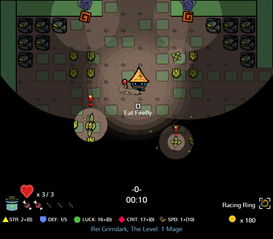Introduction to Glove-Based English Games

Engaging children in language learning can be a challenging task, especially when it comes to teaching them English. However, incorporating interactive and fun elements into the learning process can make it more enjoyable and effective. One such method is the use of glove-based English games. These games not only enhance language skills but also promote physical activity and teamwork among children.
Benefits of Glove-Based English Games

1. Interactive Learning: Glove-based games provide an interactive platform for children to engage with the language, making it more memorable and enjoyable. The physical aspect of the game helps in retaining the language in their minds.

2. Motor Skills Development: These games require children to use their hands and fingers, which helps in developing their motor skills. This is especially beneficial for young children who are still in the process of mastering their fine motor skills.

3. Teamwork and Communication: Many glove-based English games are designed to be played in groups, promoting teamwork and communication skills among children. This helps in building their social skills and encourages them to collaborate with others.

4. Language Proficiency: Regular practice with glove-based games can significantly improve a child's English proficiency. They learn new words, phrases, and sentence structures while having fun.

Popular Glove-Based English Games

1. Glove Charades: This game involves one player wearing a glove and acting out a word or phrase without speaking. The other players have to guess the word or phrase. This game is excellent for teaching new vocabulary and reinforcing previously learned words.

2. Glove Pictionary: Similar to the classic Pictionary game, this version uses a glove. One player wears the glove and draws a word or phrase on it, while the other players have to guess what it is. This game is great for teaching and reinforcing spelling and vocabulary skills.

3. Glove Storytelling: In this game, players take turns adding a sentence to a story while wearing a glove. The glove ensures that the player cannot see the previous sentences, which adds an element of surprise and creativity to the storytelling process.

4. Glove Alphabet Game: This game involves players forming letters with their hands while wearing a glove. It's a fun way to teach and practice the alphabet, as well as reinforce letter recognition and formation.

How to Create Your Own Glove-Based English Game

1. Choose a Theme: Decide on a theme for your game, such as animals, fruits, or colors. This will help you create relevant vocabulary and activities.

2. Design the Game: Create a set of instructions for the game, including how to play, what the objective is, and any rules that need to be followed.

3. Prepare the Gloves: Use non-toxic, washable gloves and create cards or flashcards with words, phrases, or images related to your theme.

4. Test the Game: Before introducing the game to children, test it with a small group to ensure that it is fun, educational, and easy to understand.

Conclusion

Glove-based English games are a fantastic way to make language learning fun and engaging for children. By incorporating physical activity, teamwork, and creativity, these games can help children develop their language skills while enjoying themselves. So, why not give it a try and watch your little ones learn English in a whole new way?
glove-basedgames englishlearning children languageeducation teachingmethods

